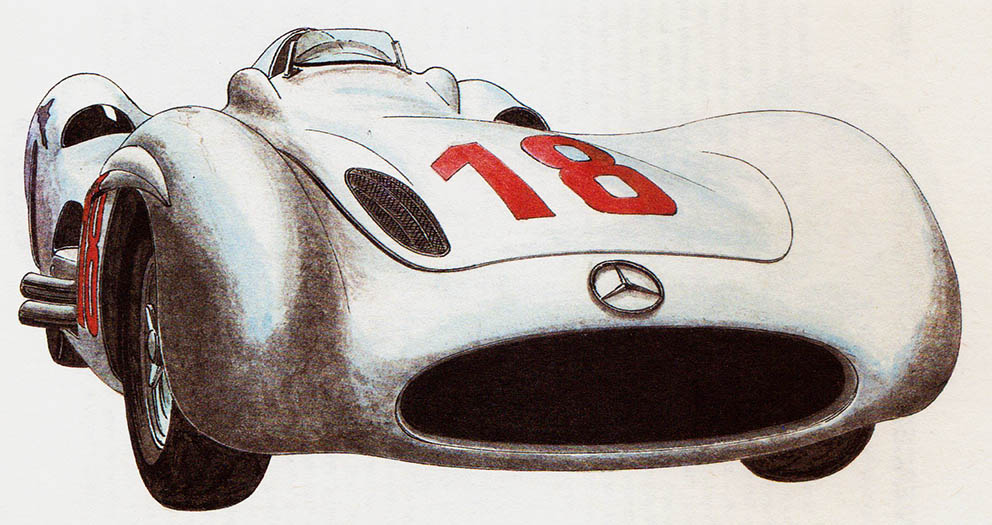MERCEDES-BENZ W 196 – year 1954
Daimler Benz AG, Stuttgart, FRG.
W 1952 Year, Daimler-Benz has decided to return to the Grand Prix racing tracks. In the preparation of the new W 196 Technical Director Fritz Nallinger and Racing Manager Rudolf Uhlenhaut and almost 1200 technicians. It passes, That 1 kg of the prototype of the new model cost 1000 marek. However, the high costs paid off and the car met all expectations and initiated many new design solutions.

Daimler Benz AG, Stuttgart, FRG
The eight-cylinder in-line engine with two camshafts in the cylinder head had a so-called. desmodromic timing, i.e. the camshaft cams not only opened, but they also closed the valves. It was required by higher engine revolutions – 9000/min, at which maximum power was achieved 220,8 kW (300 KM). In an engine with a cylinder capacity 2496 cm3 (∅ 76 x 68,8 mm) for the first time, fuel injection was successfully used with an injection pump of the type Bosch, already proven in the sports model 300 SL. The engine had a double ignition. The crankshaft, consisting of ten elements, rotated in ball bearings, and its parts were connected by a Hirth gear. The driving torque was transmitted from the central part of the shaft through a gear transmission, which also functions as a flywheel, on a single-plate dry clutch. The engine was tilted at an angle of 60 "from the vertical plane, thus maintaining the aerodynamic shape of the body and the low center of gravity. The five-speed gearbox was located behind the rear axle, where the fuel and oil tank are also located, for an even weight distribution. The light truss frame was only a mass 36 kg. The front wheels had independent suspension on wishbones in a trapezoidal arrangement with longitudinal torsion bars in the lower arms. There were also telescopic shock absorbers and a torsion stabilizer. Rear wheels, suspended on oscillating shafts with a lowered pivot point, they were sprung with longitudinal torsion bars. The load change caused by emptying the tank was counterbalanced by the action of the auxiliary spring, manually adjustable. The brakes were located directly at the differential, which lowered the unsprung mass of the car's suspension. Brake cooling was provided by cast drums with rich ribbing. In the original version, the vehicle had an aerodynamic design, streamlined body and reached top speed 270 km/h.